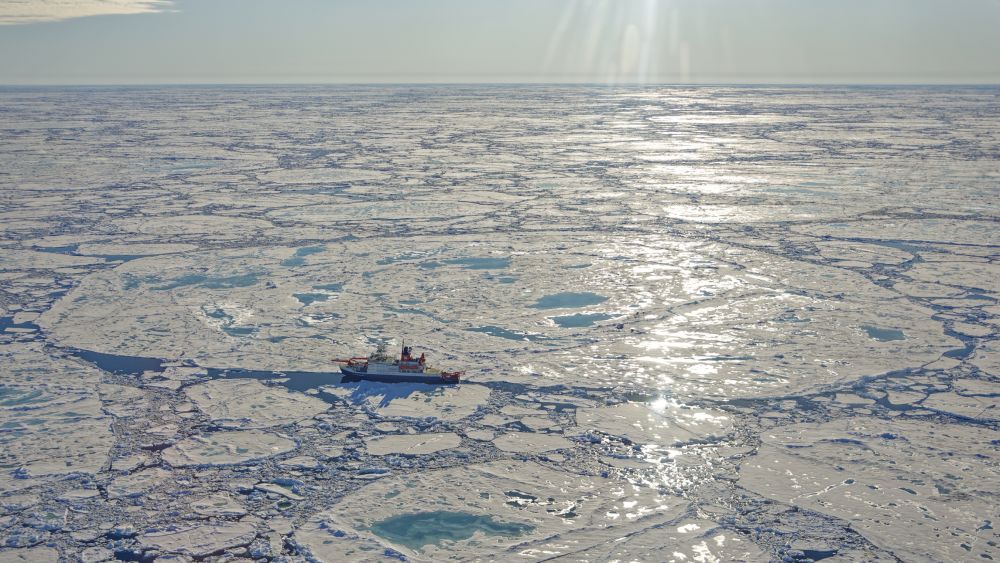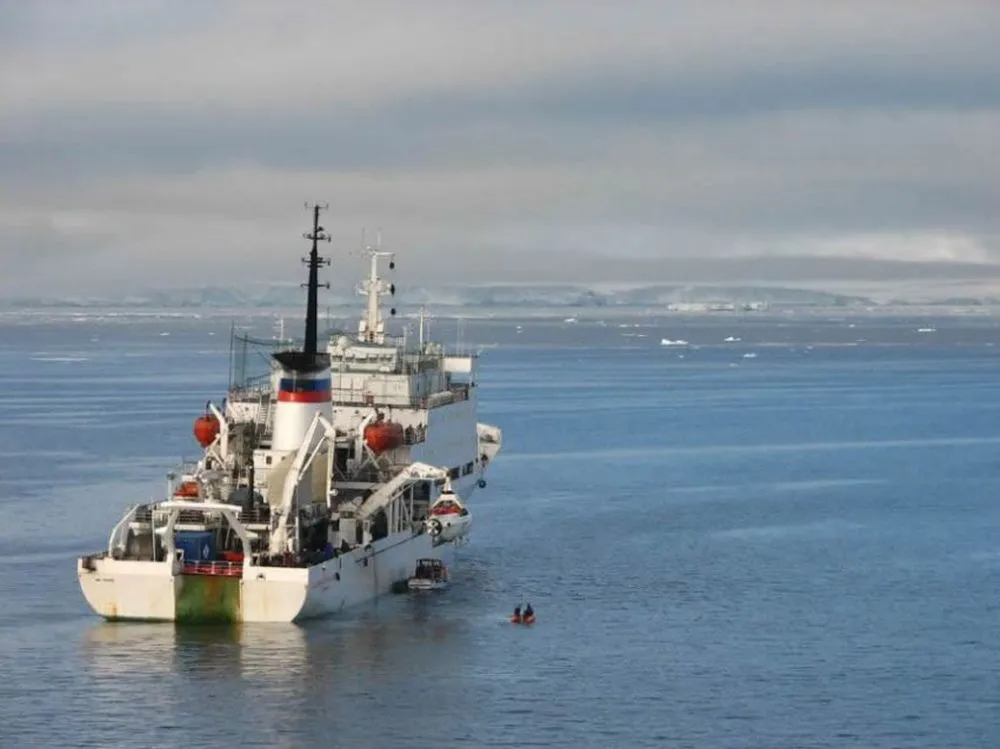Methane Deposits Trapped in Arctic Releasing into Atmosphere, Climate Change to Exacerbate
Ancient deposits of frozen methane in the Arctic Ocean seem to be leaking after unprecedented heatwave and ice melting around the North Pole. Researchers indicate that these methane deposits in the Arctic have started to release into the atmosphere over a 1,500 sq. km. area of the continental slope off the East Siberian coast. They also warn that this release of methane could catastrophically escalate the pace of climate change.

Researchers have found frozen methane deposits in Arctic Ocean | Image: Markus Rex/Alfred-Wegener-Institute
The frozen deposits of methane and other gases, also called hydrates, are known as the “sleeping giants of the carbon cycle.” The release of these gases could increase the greenhouse gas deposits in the atmosphere, consequently worsening the changing climate.
The international research team aboard the Russian ship R/V Akademik Keldysh detected high levels of the potent greenhouse gas down a depth of 350 meters in the Laptev Sea near Russia. The team said that most of the bubbles were currently dissolving in the water but methane levels at the surface were four to eight times than expected.
Örjan Gustafsson, of Stockholm University, said he thinks that methane is releasing into the air from the water.
At this moment, there is unlikely to be any major impact on global warming, but the point is that this process has now been triggered. This East Siberian slope methane hydrate system has been perturbed and the process will be ongoing.
According to the scientists behind the preliminary findings, which are yet to be peer-reviewed and published, the new methane deposits may have triggered a new climate feedback loop that could accelerate the pace of global warming.
The scientists, who were part of the International Siberian Study Shelf Expedition, emphasized the fact that their findings were preliminary. The scale of the methane reservoir and its release will not be confirmed until the data is analyzed, peer-reviewed, and published.

The R/V Akademik Keldysh | Image: ACES
At one location on the Laptev Sea slope at a depth of around 300 meters (1,000 feet), the researchers found methane concentrations of up to 1,600 nanomoles per liter, which is 400 times higher than expected in an equilibrated system. The most likely cause of the instability is an intrusion of warm Atlantic currents into the eastern Arctic, which is primarily driven by human-induced climate change.
The team has found crater-like pockmarks in the shallower parts of the Laptev Sea and the East Siberian Sea for the second years in a row. These pockmarks are discharging bubble jets of methane, which is reaching the sea surface at levels tens to hundreds of times higher than usual. This is like the craters and sinkholes reported from the inland Siberian tundra earlier this autumn.
In recent times, the temperatures in the region have been dwindling. Temperatures in Siberia were 5C higher than average from January to June this year, an anomaly that was made at least 600 times more likely by human-caused emissions of carbon dioxide and methane.


